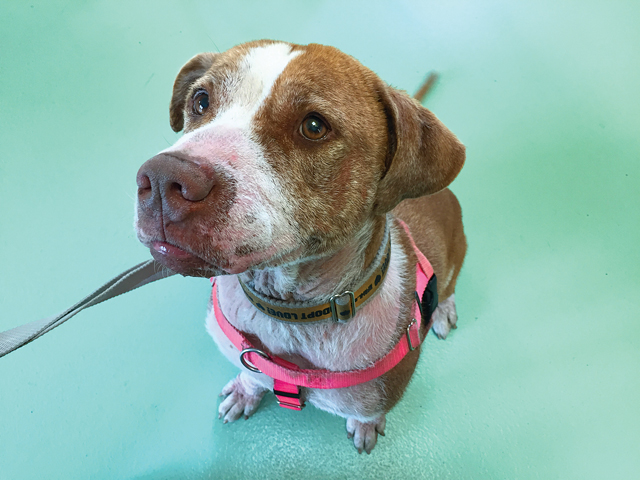Have a question about animals? Check out our new pet column


Over the past two decades, I’ve learned a lot about animals and the people who love them in my role as executive director of North Fork Animal Welfare League.
No two days there are ever the same and I’m grateful to work alongside a team tirelessly dedicated to helping animals in need — from dogs and cats to iguanas and parrots, even owls and turtles … The list goes on!
The League has been serving the community for over 50 years and it is our hope that this column, which will appear regularly in The Suffolk Times and Riverhead News-Review, will allow us to answer questions you may have about our programs and policies or the services we provide. We also have trainers and vets on call to share their expertise about animal care and behavior.
For this inaugural column, I’m responding to frequently asked questions about North Fork Animal Welfare League.
What is the relationship between the League and the towns of Southold and Riverhead?
The League is proud to be trusted with the responsibility of being contracted to operate municipal animal care and control programs for the towns of Southold and Riverhead.
What exactly is the league contracted to do and why?
New York State requires each municipality to provide services that include the licensing and identification of dogs and the seizure of stray dogs. These mandated services must also include the protection of the dog population and the protection of people, domestic animals and livestock from dog attacks. Most of these obligatory duties were put on the books many years ago to prevent the spread of rabies by dogs and to protect other animals. Municipalities can administer these services themselves, through civil service employees, or can contract them out to an incorporated animal protective association. Southold and Riverhead towns decided that the animals in their communities were best served by contracting out their state-mandated animal care and control services to the League.
What is the difference between a municipal shelter and a private shelter like Kent or Bide-a-Wee?
Private shelters are just that — private. They are not required to enforce state-mandated animal control. The most significant difference between private and municipal shelters is where the animals in their care come from. Private shelters are not allowed to pick up stray or loose dogs from the streets, and there are good reasons for this.
If you lose your dog — and most dog owners have experienced that horrible moment when their dog slips through their legs and out the door — you need to know where to look. Municipal shelters are the only place that can legally accept a stray dog and are required by law to pick up and house any dogs running at large within their municipality. The animals accepted into private shelters can only come directly from owners who can no longer care for them or from other shelters or rescue groups.
How do the municipalities benefit from contracting with the League?
Towns have the huge responsibility of providing myriad important services to their residents, and town budgets never seem to be quite large enough to do everything everyone expects. Animal care and control is most often allocated the minimal financial compensation required to provide for the work considered compulsory by the state. This leaves out a whole lot of stuff we here at the League think is really important. The partnerships created by our contracts transfer most of the state-mandated responsibilities from the towns to the League. The towns pay us the “minimal financial compensation” they would otherwise spend.
How does the League cover other costs?
We are a nonprofit organization that raises additional needed funds through donations. These contributions allow us to provide comprehensive services that result in a culture of kindness and humanity for animals in our community that we can all be proud of. The League strives to improve the lives of all needy and homeless animals in our community, and our community is forever expanding. Issues of animal overpopulation and good stewardship cannot be solved by a single organization working in a vacuum of geographic limitations. The animal welfare field tried this for years and made limited progress. True progress comes with collaboration, resource pooling and an operational approach that includes a much broader sense of responsibility. The synergetic relationships that are essential if we are to reach our goal of a good home for every companion animal are based on knowledge and understanding.
Please send questions for future columns to [email protected]. We look forward to hearing from you!
Top photo: Holly, a 5-year-old mixed breed, waits for a treat in the shelter’s classroom. Holly and her daughter, Tay-Tay, both of whom suffered from a severe skin condition and were taken in after their owners became homeless, are now available for adoption. (Credit: Paul Squire)
Gillian Wood Pultz is the executive director of North Fork Animal Welfare League.








